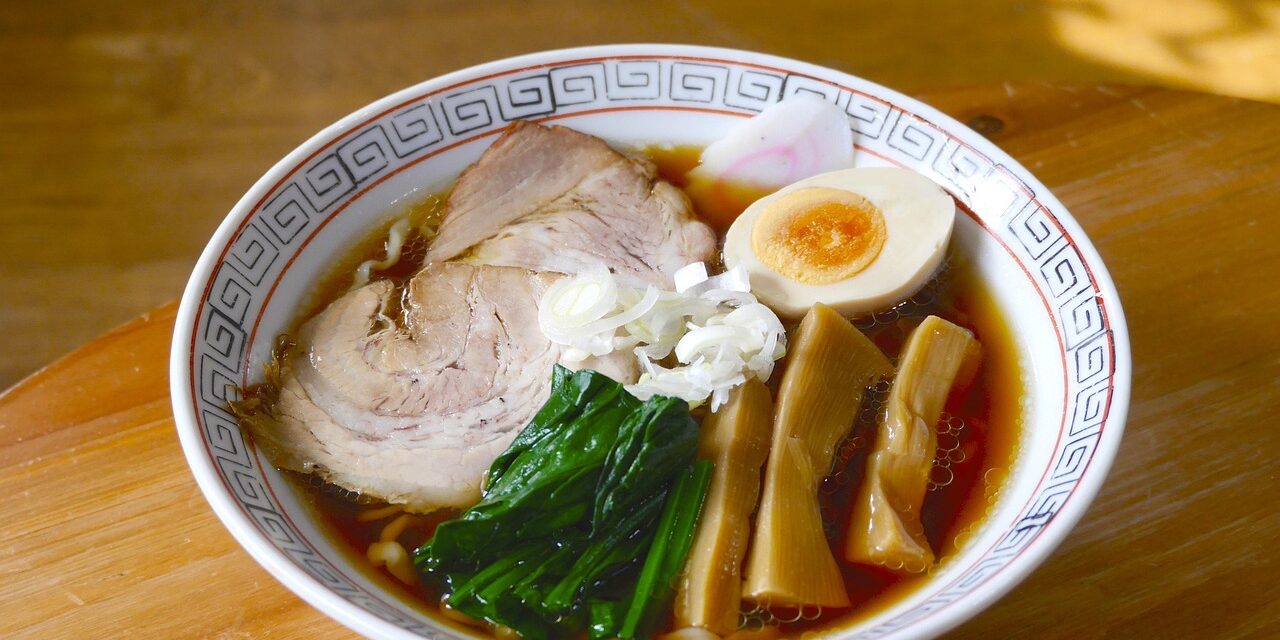Sano ramen, a distinguished variety of Japanese ramen, originates from the Tochigi Prefecture, situated in the Kanto region of Japan. This particular type of ramen boasts of unique characteristics that encapsulate both culinary artistry and cultural heritage. Understanding Sano ramen requires an exploration into its ingredients, preparation methods, cultural significance, and its growing influence in both domestic and international culinary spheres.
One of the most prominent characteristics of Sano ramen is its distinctive soup base. Typically, Sano ramen is characterized by a shoyu (soy sauce) broth, often enriched with chicken or pork stock, which sets it apart from other regional ramen varieties such as Tonkotsu from Fukuoka or Miso Ramen from Hokkaido. According to a survey conducted by the All Japan Ramen Association in 2022, shoyu ramen remains the most popular ramen type in Japan, with 42% of respondents favoring its balanced flavor profile. This popularity is largely attributed to the use of high-quality ingredients that define the taste of Sano ramen, particularly the locally-sourced chicken and pork, as well as long-simmered aromatic vegetables.
The preparation of Sano ramen entails meticulous craftsmanship, which emphasizes both authenticity and traditional techniques. The noodles, made from wheat flour, water, and kansui (an alkaline mineral water), are crucial to the dish’s integrity. Sano ramen noodles are known for their elastic texture and a slight yellow tint, a result of the kansui’s alkaline properties. The use of kansui is integral to producing ramen that retains its structure when immersed in hot broth, thereby enhancing the overall dining experience. A statistical analysis by the Japanese Ramen Institute revealed that Sano ramen noodles achieve a textural optimality, remaining firm and chewy even after prolonged exposure to broth, an aspect that is fundamental to Japanese culinary expectations surrounding ramen.
Moreover, Sano ramen is garnished with a variety of toppings that contribute to its layered flavor profile. Common accompaniments include chashu (braised pork belly), narutomaki (fish cake), menma (bamboo shoots), and green onions. Each component plays a significant role in not only enriching the taste but also adding nutritional value to the dish. For instance, chashu, rich in protein and fats, balances the saltiness of the shoyu broth, whereas menma, high in dietary fiber, encourages a healthy digestive process. The artistry of assembling these toppings is often likened to the precision of Japanese kaiseki cuisine, revealing both an aesthetic and gastronomic dimension to the preparation of Sano ramen.
The cultural significance of Sano ramen extends beyond mere consumption; it symbolizes the rich culinary heritage of Tochigi Prefecture. In 2016, the Tochigi Prefectural Government designated Sano ramen as a “Local Gourmet,” recognizing its importance in the regional economy and its integral role in community identity. Numerous festivals celebrate Sano ramen, most notably the annual Sano Ramen Festival, which attracts over 100,000 visitors annually. This event not only showcases the culinary prowess associated with Sano ramen but also promotes local agriculture, as many of the ingredients used are sourced within the prefecture.
The globalization of Japanese cuisine has also sparked an increased interest in Sano ramen beyond Japan’s borders. The proliferation of Japanese restaurants worldwide, particularly in North America and Europe, has introduced Sano ramen to an international audience. As culinary trends increasingly lean toward authenticity, Sano ramen offers a unique proposition due to its regional characteristics and traditional preparation methods. Reports from the International Food Research Association suggest a steady growth in Japanese noodle consumption, which has risen by 25% in North America from 2015 to 2022. This meteoric rise underscores the universal appeal of ramen and highlights Sano ramen’s potential to become a global culinary icon.
In conclusion, Sano ramen stands as a testament to the intricate interplay between culinary craftsmanship and cultural reverence inherent in Japanese cuisine. Its distinctive characteristics—ranging from a rich shoyu broth and artisanal noodles to a variety of traditional toppings—highlight the dish’s complexity and depth. Furthermore, its cultural significance within Tochigi Prefecture, combined with its expanding global presence, underscores the vitality of Sano ramen as an enduring symbol of Japanese gastronomic heritage. As culinary landscapes continue to evolve, Sano ramen remains a key player, continuously inviting exploration and appreciation.

